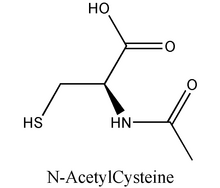Spada C, Treitinger A, Reis M, et al. Clin Chem Lab Med 2002;40:452-455.
Individuals infected with the human immunodeficiency virus (HIV-1) present with decreased CD4, a progressive increase in viral load, compromised cell immune defense, and hematologic alterations. The aim of this study was to assess the serum viral load, CD4, CD8, lymphocyte count and hematocrit at the beginning of antiretroviral therapy in individuals who were supplemented with N-acetylcysteine (NAC). Twenty volunteers participated in this double-blind, placebo-controlled 180-day study. Ten participants received 600 mg of NAC per day (NAC group) and the other ten serving as a control group received placebo. The above mentioned parameters were determined before treatment, and after 60, 120 and 180 days. In NAC-treated patients hematocrit remained stable and an increase in CD4 cell count took place earlier than that in the control group.
COPYRIGHT 2002 Thorne Research Inc.
COPYRIGHT 2002 Gale Group



